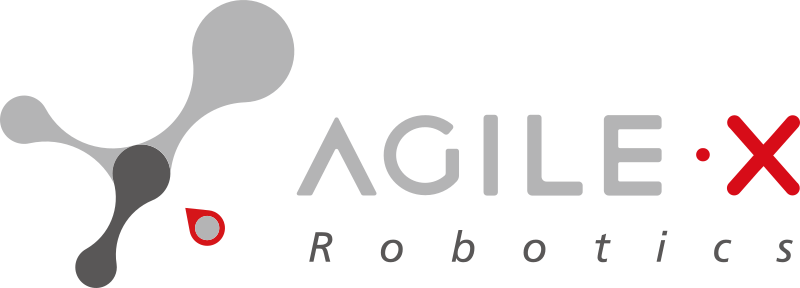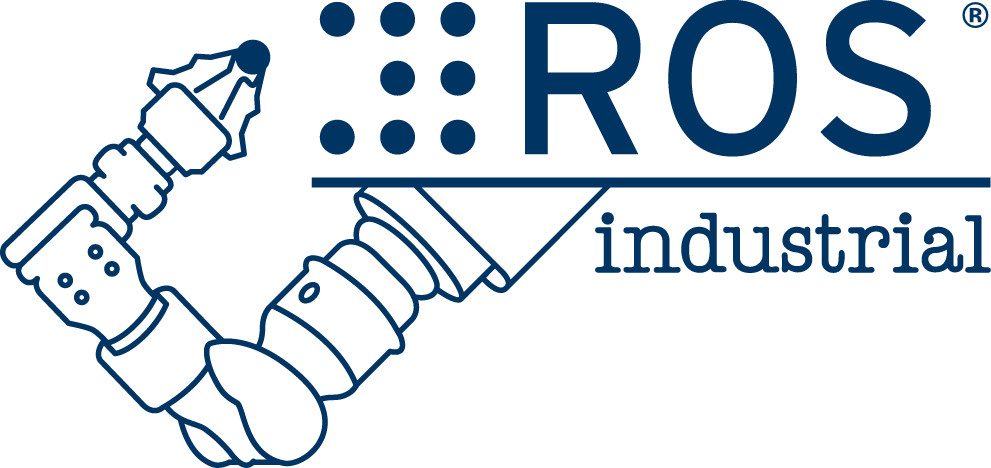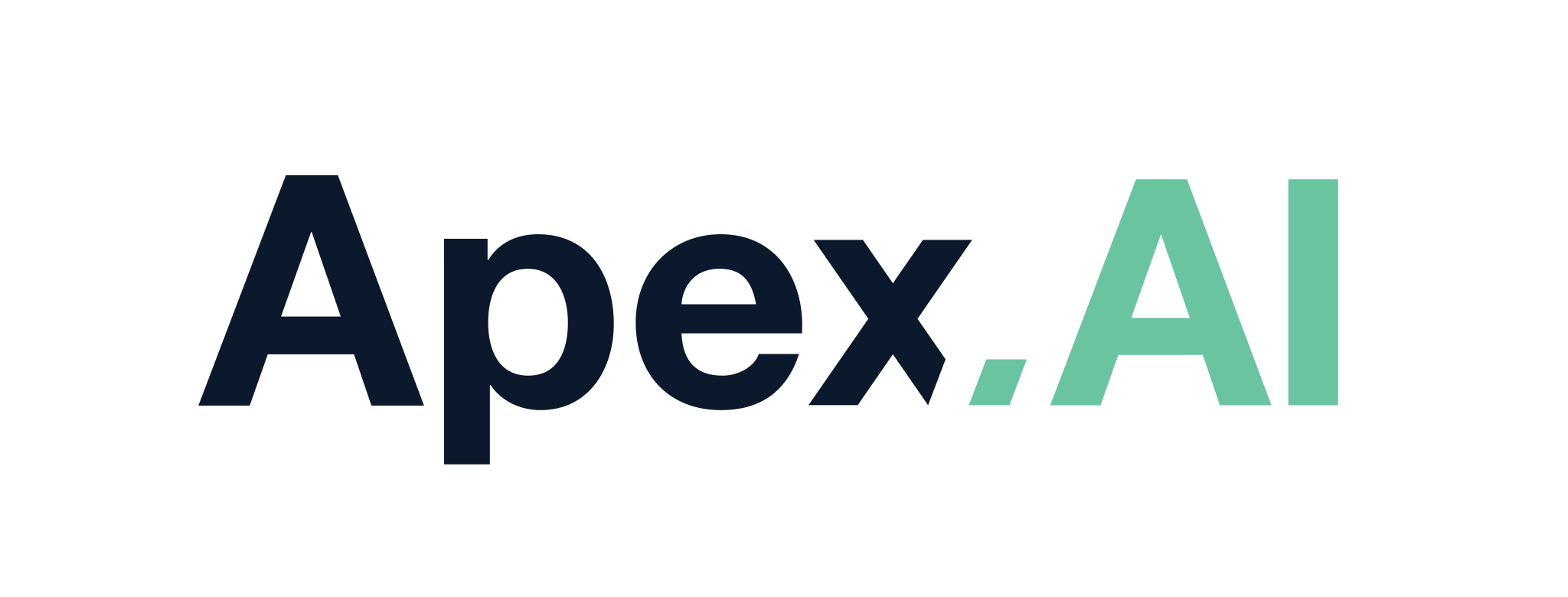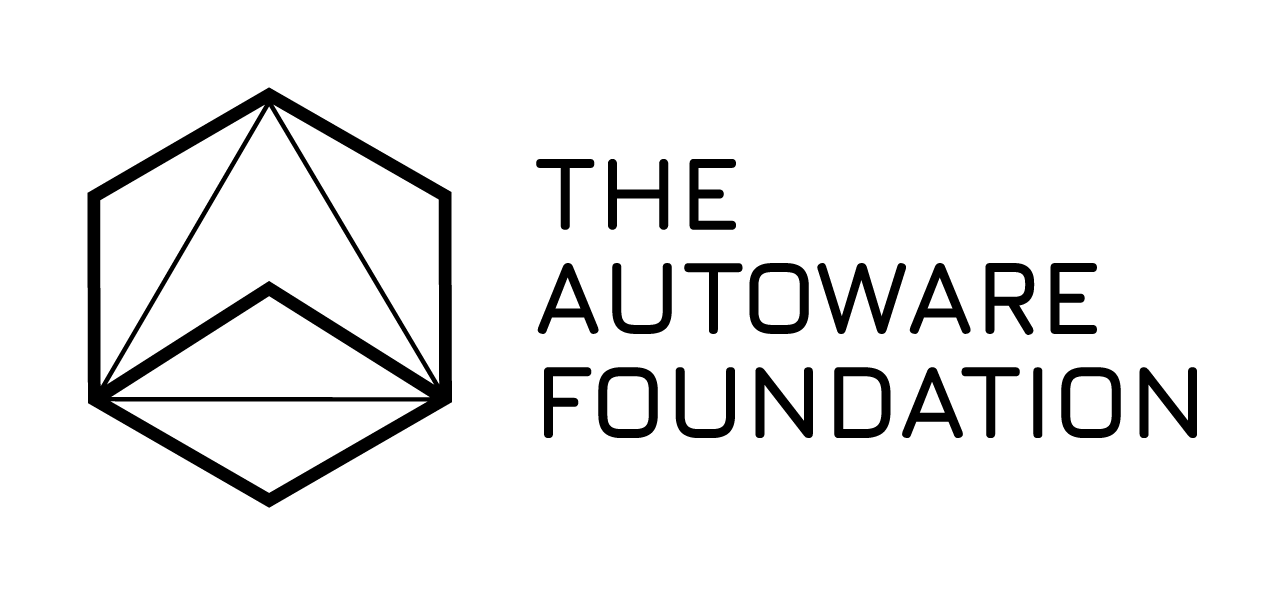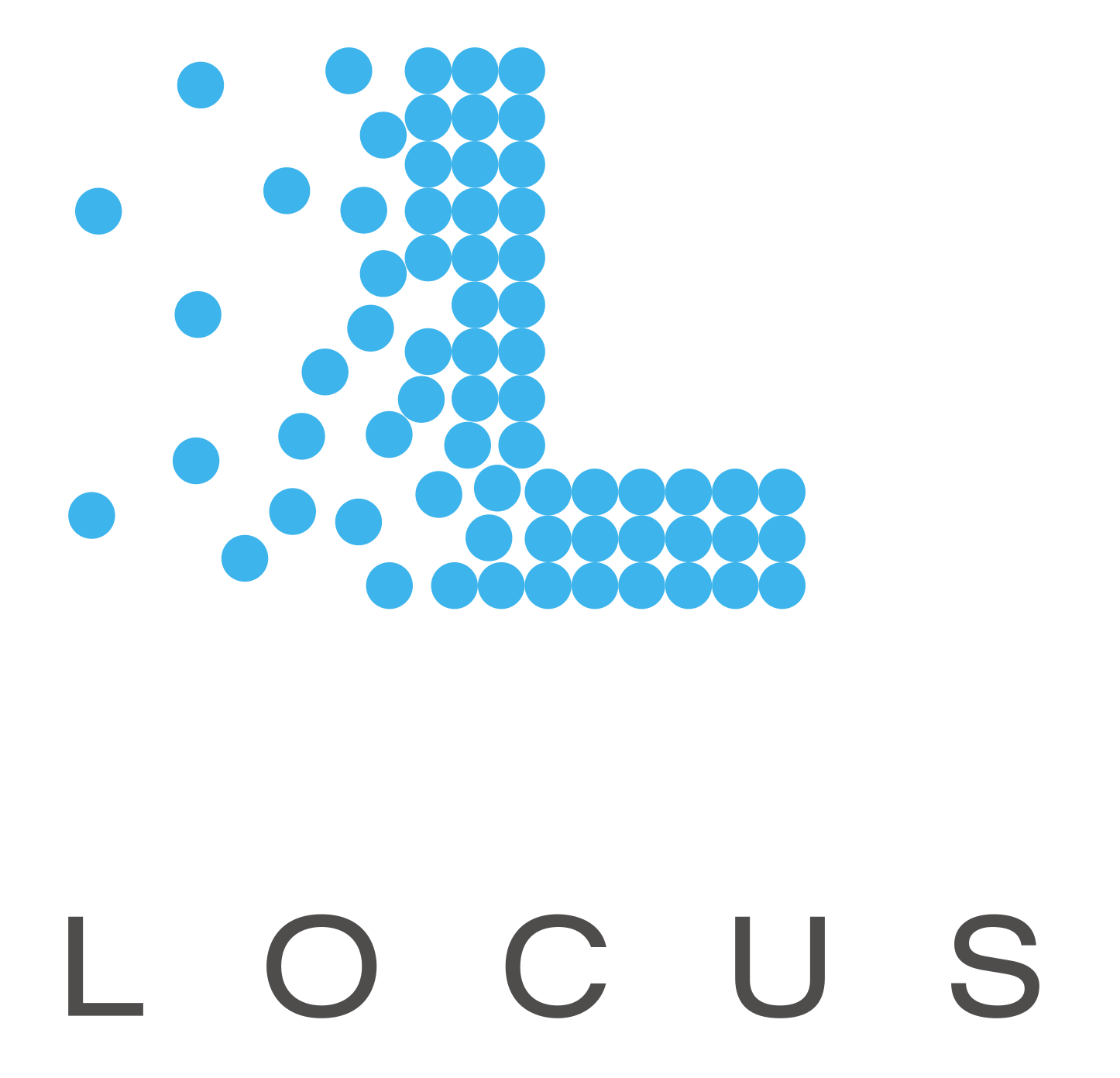ROSCon 2025
Republic of Singapore
October 27th - 29th, 2025
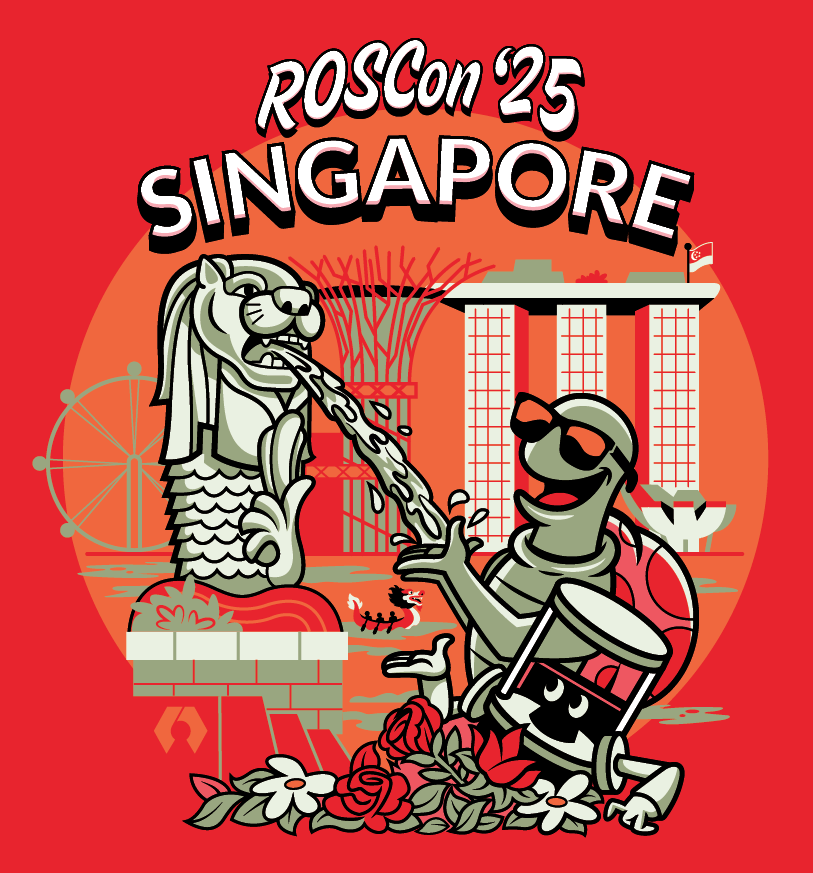
ROSCon 2025 will be held in Singapore on October 27th - October 29th, 2025. ROSCon 2025 is a chance for ROS developers of all levels, beginner to expert, to spend an extraordinary three days learning from and networking with the ROS community. Get tips and tricks from experts and meet and share ideas with fellow developers.
ROSCon is a developers’ conference, in the model of PyCon and BoostCon. Following the success of our past events, this year’s ROSCon will be our fourteenth ROSCon and held in Singapore. Similar to previous years, the three-day program will comprise a mixture of workshops, technical talks, and tutorials that will introduce you to new tools and libraries, as well as teach you more about the ones you already know. The bulk of the program will be presentations, along with panel discussions, lightning talks, demonstrations, and workshops.
We aim for ROSCon to represent the entire ROS community, which is global and diverse. Whoever you are, whatever you do, and wherever you do it, if you’re interested in ROS, then we want you to join us at ROSCon. We encourage women, members of minority groups, and members of other under-represented groups to attend ROSCon. We expect all attendees to follow our code of conduct.
If you have questions, concerns, or ideas for ROSCon 2025, please contact the executive committee.
We also welcome suggestions for what else we can do to encourage more participation. Contact us if you have ideas that you’d like to share.
Dates
ROSCon 2025 Key Dates
Call for Proposals circulated
March 24th, 2025
Diversity Scholarship application deadline
April 18th, 2025
Workshop submission deadline
May 5th, 2025
Proposal submission deadline
June 2nd, 2025
Ticket Sales Begin
June 16th, 2025
Proposal acceptance notification
July 14th, 2025
Early registration deadline
August 17th, 2025
Late registration starts
September 29th, 2025
Sponsors
Sponsor ROSCon 2025!
We are now accepting sponsorships for ROSCon 2025! Full details regarding our 2025 sponsorship benefits are listed in our sponsorship prospectus. We recommend that you claim your spot as soon as possible, booth space and sponsorship add-ons for ROSCon are limited.
Whether you’re ready to commit to a specific level or have a question or special request regarding the sponsorship program, please contact the ROSCon executive committee (roscon-2025-ec@openrobotics.org).
ROSCon 2025 Sponsors
Gold Sponsors
Silver Sponsors
Bronze Sponsors
Startup Alley Sponsors
Live Stream and Video Archive Sponsor
Refreshment Sponsors
Lunch Sponsor
Diversity Scholarship Sponsors
attend
ROSCon Registration
Space at ROSCon is limited, and registration is on a first-come, first-serve basis, We recommend you register as soon as possible as ROSCon registration often sells out a few weeks before the event. Workshop seating is limited, and popular workshops sell out quickly. Discounted registration fees are available for early registration and students (see the table).
ROSCon Registration Rates
| Ticket Type | Price (USD) | Available Dates |
|---|---|---|
| Early Student | $250 | Until 2025-08-17 |
| Early General | $550 | Until 2025-08-17 |
| Regular Student | $350 | 2025-08-18 to 2025-09-28 |
| Regular General | $700 | 2025-08-28 to 2025-09-28 |
| Late Student | $500 | After 2025-09-29 |
| Late General | $1000 | After 2025-09-29 |
| Workshops - Student | $50 + Conference Registration | Until 2025-10-27 (while supplies last) |
| Workshops - Non-Student | $100-$150 + Conference Registration | Until 2025-10-27 (while supplies last) |
Event Location
ROSCon 2025 will be held at the Suntec Singapore Convention & Exhibition Centre at 1 Raffles Blvd, Singapore 039593.
Google Maps | Kagi Maps | Apple Maps | Open Street Maps
Conference Hotels
For ROSCon 2025 we have partnered with multiple hotels in Singapore to make sure we have suffient space for all of our guests. All of our partner hotels offer discounted rates for ROSCon 2025 but vary in terms of amenities, room sizes, and proximity to the event venue.
| Name | Location | Price | Available Dates | Details | |
|---|---|---|---|---|---|
| Carlton Hotel | 76 Bras Basah Rd, Singapore 189558 (~550m) | S$265-300 | Use link: bit.ly/ROSCONNP41 | ||
| | |||||
| Hotel Boss | 500 Jalan Sultan Singapore 199020 (~1.5km) | S$143 | 2025-10-24 2025-11-01 | Use this link | |
| Hotel Mi Rocher | 89 Short Street Singapore 188216 (~3.5km) | S$151 | Use this link | ||
| Hotel Fabar Park Singapore | 500 Jalan Sultan, Singapore 199020 (~6.7km) | S$143 | Use this link | ||
| Ascott Orchard | 11 Cairnhill Road, Singapore 229724 (~2.7km) | S$280 | 2025-10-21 2025-11-02 | Corporate Code: P5MEE906 | |
| Citadines Rochor Singapore | 2 Serangoon Road #03-01 Tekka Place Singapore 218227 (~3.3km) | S$190 | 2025-10-21 2025-11-02 | Corporate Code: P5MEE906 | |
| JW Marriott Singapore South Beach | 30 Beach Road, Singapore 189763 (~1km) | S$380-S$420 | 2025-10-21 2025-11-02 | Use this link | |
Travel Information
Changi Internatiohnal Airport (SIN) is the main airport. The airport is 17km from the Suntec Convention Center.
Transportation from Changi International Airport:
- MRT (Mass Rapid Transport)
- Time: 45 minutes
- Cost: SGD 2
- Primary Route
- Take the East West Line (EWL) from Changi Airport MRT Station (CG2) to Tanah Merah (EW4).
- Transfer to another train on the East West Line (EWL) towards City Hall (EW13/NS25).
- At City Hall MRT, walk ~8 minutes through CityLink Mall to Suntec Convention Center.
- 💡 Alternative MRT Route:
- Take the Downtown Line (DTL) at Expo MRT (CG1/DT35) (1 stop from Changi).
- Travel to Promenade MRT (DT15/CC4).
- Walk ~5 minutes to Suntec.
- Taxi or Private Car
- Ride sharing apps in Singapore include ComfortDelGro, Grab, Gojek, Ryde and TADA
- Time: 15-20 minutes
- Cost: SGD 20-30
- Airport Shuttle
- You can book an airport shuttle at the Ground Transport Concierge in any terminal. It drops passengers at major hotels, including those near Suntec.
- Time: ~30-40 minutes
- Cost: ~SGD 10 per person
Singapore Tourism Information
Program
ROSCon Schedule
ROSCon Workshops
Monday, October 27th, 2025
ROSCon workshops are available for an additional fee when you register for ROSCon 2025.
Space is limited, and workshops often sell out, so make sure to register early!
| Room | Time | Workshop |
|---|---|---|
| TBD | Half Day Morning 8am-12pm | ros2_control: Fun With Robot Drivers Dr. Denis Stogl -- b»robotized by Stogl Robotics Bence Magyar -- Locus Robotics ros2_control is a hardware-agnostic control framework for abstracting hardware and low-level control for 3rd party solutions like MoveIt2 and Nav2 systems. This workshop provides a practical deep dive into writing robot drivers with ros2_control. This hardware abstraction layer is critical to handling data transmission, hardware lifecycle, and possible errors in every application. You will be introduced to hands-on integration of an embedded board that implements a differential drive robot. Additionally, we'll demonstrate examples from different domains and best practices for using ros2_control for ease of use, increased flexibility and robustness. ⓘ More Information |
| TBD | Half Day Morning 8am-12pm | Scalable Multi-Robot Scene workflows using ROS Simulation Interfaces standard in Isaac Sim Ayush Ghosh -- NVIDIA Raffaello Bonghi -- NVIDIA The new ROS Simulation Interfaces standard (developed in collaboration with O3DE, NVIDIA Isaac Sim, and Gazebo) provides a unified approach to interacting with simulation environments, regardless of the engine used. This workshop highlights the practical implementation of Simulation Interfaces within NVIDIA Isaac Sim and will showcase how this standard facilitates multi robot scene generation, deployment and environmental manipulation, in a reproducible manner suited for automated testing. Isaac Sim’s support offers photorealistic simulation and is GPU-accelerated. By harnessing the capabilities of the new Simulation Interfaces standard, researchers and developers in perception, navigation, and manipulation can benefit by quickly building workflows, switching between simulators, or using multiple simulators in parallel. ⓘ More Information |
| TBD | Full Day TBD | Hands-On Aerial Robotics Using PX4 and ROS 2 Ramon Roche -- Dronecode Foundation Patrik Pordi -- ARK Electronics Beniamino Pozzan -- PX4 Autopilot Picture yourself in Gazebo, sending velocity, position, and acceleration commands straight from your ROS 2 nodes while PX4 quietly manages real-time flight control and built-in safety. Over the course of a full-day, hands-on workshop, you'll see why PX4 powers so many high-reliability robotics projects, learn to hook your existing ROS 2 setup into our plug-and-play bridge, and stream live telemetry back to your code. You'll explore perception integrations, think ArUco markers and LiDAR, build high-level control routines in ROS, and leave with working simulation environments, example projects, and a clear path to swap out virtual drones for real hardware. No PX4 background is needed, just your ROS expertise, a laptop, and a spirit of discovery. Everything in this workshop is fully open source and open for you to inspect, modify, and share. ⓘ More Information |
| TBD | Half Day Afternoon 1pm-5pm | ROS 2 Networking Redefined: Deep Dive into RMW Zenoh Julien Enoch -- ZettaScale Technology Alejandro Hernández Cordero -- Honu Robotics Yadunund Vijay -- Intrinsic RMW Zenoh has been launched as a Tier 1 solution across all supported ROS 2 distributions, offering an alternative to DDS middlewares. Its deployment and setup differ somewhat from DDS-based RMWs. In this workshop, we will explore these differences and provide comprehensive insights into configuring RMW Zenoh for various scenarios, including intra-robot and extra-robot communications, constrained networks such as WiFi or 4G/5G, Internet connectivity, and leveraging SROS for security measures such as authentication and access control. Participants will gain hands-on experience and leave with a robust understanding of how to implement and optimize RMW Zenoh in their ROS 2 projects. All you need to attend is a laptop with Docker and Visual Studio Code. ⓘ More Information |
| TBD | Half Day Afternoon 1pm-5pm | ROS 2 & micro-ROS Dive In: Low-Cost Underwater Robotics Abu Bakr Azam, Mohammad Aasim Khan, Nguyen Trung Kien -- Nanyang Technological University, Singapore Underwater robotics remains a specialized niche with high costs obstructing broader adoption. Leveraging ROS 2 for sensing and micro-ROS on an ESP32 MCU for real-time actuation, this workshop guides participants in building a cost-effective, closed-loop AUV control framework. Attendees will flash prebuilt micro-ROS firmware onto ESP32 boards, implement open- and closed-loop thruster control, and visualize performance via ROS resources such as RVIz and RQT. On the localization front, they will integrate a Blue Robotics Ping single-beam SONAR into ROS 2, publish range data with custom nodes, and fuse measurements with a linear Kalman filter for depth and heading estimation. By the end, participants gain hands-on experience in low-cost AUV control and sensor-fusion techniques, ready to extend open-source frameworks to real-world marine applications. ⓘ More Information |
| TBD | Half Day Afternoon 1pm-5pm | How to Implement a Full ROS 2 Application: a Tic-Tac-Toe Player Robot Ricardo Tellez -- The Construct Cynthia Zeng -- AgileX Come to this workshop to learn how to create a full ROS 2 application from beginning to end that integrates perception, robot arm motion and AI. You will program an arm robot to play tic-tac-toe. We will teach how to create a ROS 2 application that makes a robot arm play tic-tac-toe against a human. We will teach how to integrate a robotic arm, a camera and an AI engine to play the game: the camera captures the current state of the board and processes the image to understand the current situation. Then it calls the AI engine to get the best next move. Then the robot arm draws the selected move on the board and waits for the human to make her move. We will use simulation and real arm robot. ⓘ More Information |
| TBD | Half Day Morning 8am-12pm | Introducing AI PCs for Embodied AI Graham Schelle, Sonya Yang, Joshua Lu, Ken O’Brien -- AMD Chun-Yi Lee -- National Taiwan University The new AI PC platform combines CPUs, iGPUs and NPUs onto a single chip, but how do you program this new device for your ROS 2 application? In this workshop, you will get hands-on experience with embodied AI open-source software running on AI PCs. Software will be shown running across all the processor types and we will highlight the benefits of each style of computation for roboticists. To demonstrate what is possible, we will touch on a variety of robotics frameworks such as physics simulators, robotics AI policies and real-world robotics control. And to help you build your own applications with AI PCs, we will introduce a new LLM-driven NPU code generator specifically tailored for ROS 2 software. This is a hands-on experience, and we will have both local and cloud accessible AI PCs for in-person attendees. ⓘ More Information |
| TBD | Half Day Afternoon 1pm-5pm | Reinforcement Learning for Deliberation in ROS 2 Christian Henkel -- Bosch Research Sebastian Castro -- Robotics and AI Institute Hosted by the ROS Deliberation Community Group, this workshop offers a beginner-friendly introduction to using Reinforcement Learning (RL) for high-level decision-making in ROS 2. Through guided, hands-on exercises in a simulated robot environment, participants will learn the core concepts behind RL for robotic deliberation: how to collect data, tune hyperparameters, train policies using different algorithms like Proximal Policy Optimization (PPO) or Soft Actor-Critic (SAC), and visualize and interpret the results. The workshop assumes no prior experience with RL or deliberation. All concepts and tools will be explained step by step, making it an ideal starting point for anyone curious about applying learning-based methods to robot behavior. While the workshop will focus on RL, the summary will cover general tips for integrating machine learning into ROS 2 based systems. ⓘ More Information |
| TBD | Half Day Morning 8am-12pm | Introduction to ROS and Building Robots with Open-Source Software Geoff Biggs -- Open Robotics Katherine Scott -- Intrinsic This workshop will provide attendees with an introduction to building robots using open-source software, particularly using ROS across various industries and applications, and applying open-source contribution, governance and licensing concepts. Those new to ROS will learn the fundamental concepts through a mixture of talks and hands-on practical exercises. Experienced members of the community will be on-hand to assist attendees with any problems they encounter, and provide answers to questions attendees may have. The workshop will also feature talks on the OSRF's other projects such as Gazebo, Open-RMF and the Turtlebot. ⓘ More Information |
ROSCon Schedule
Day One, October 28th, 2025
All times are SST (UTC+8)
9:00 SST
9:10 SST
Advancing Robot Learning With ROS 2
ROS Room: Nicoll 1 - 3
Tiffany Cappellari
Robotics and AI Institute
Sebastian Castro
Robotics and AI Institute
The Robotics and AI (RAI) Institute aims to solve the most important and fundamental problems in robotics and AI. Our work incorporates machine learning, controls, dexterity, mobility, perception, and hardware design. This talk will describe the use of ROS at the RAI Institute for our research projects. This includes topics such as teleoperation for imitation learning, visuomotor policy inference in C++ and Python nodes, and behavior composition. We will describe our experience with frameworks like ros2_control, as well as open-source contributions from the RAI Institute, to support a variety of robot platforms including Franka Research 3 and Boston Dynamics Spot.
🌐 More Info
9:50 SST
ROS Project Update
ROS Room: Nicoll 1 - 3
Michael Carroll
Intrinsic
10:10 SST
Ros-Controls Project Update
ROS Room: Nicoll 1 - 3
Denis Stogl
b»robotized
From last year’s ROSCon there were many changes and updates to ros2_control. The number of maintainers has doubled, ros-controls is now an OSRA project and some of the long awaited features have been merged! From 2025, after many months of intensive development and a few bugs later, you can enjoy fully fledged async components, support for variants, access to URDF from every component, integrated joint limiters on the hardware layer that controllers can also use. Of course, many details more, like a dedicated repository with shared CMake definitions and pre-defined CI actions. Join the talk and save some time in the future!
🌐 More Info
10:40 SST
Coffee Break
Room: Foyer
11:10 SST
On Use of Nav2 Route Server
Robots and People Room: Nicoll 1 - 3
Steve Macenski
Open Navigation LLC
We introduce Nav2's newest server, Nav2 Route. It performs sparse route graph-based planning and progress tracking to enable routing across massive regions in real-time, enforcing deterministic execution, and/or performing operations throughout task execution leveraging arbitrary graph-defined metadata. This fills a broad need in the community for production capabilities in indoor logistics, massive outdoor spaces, and placing limits on navigable regions. This package uses several unique plugin interfaces to allow use-case specific behaviors to create bespoke applications easily. This talk will go over the key points of the server, demonstrations, and how to enable it in user applications.
🌐 More Info
11:30 SST
Seeing Is Believing: Enhancing Robot Acceptance With Perception-Aware LED Feedback
Robots and People Room: Nicoll 1 - 3
Matthias Schörghuber
Austrian Institute of Technology
How can we make robot perception understandable for the people who share a workspace with autonomous mobile robots (AMRs)? In this talk, we present a lightweight ROS 2 framework that uses LED strips to visualize real-time perception feedback. It supports arbitrary arrangements and rich RViz-based visualizations to show how detection patterns translate into interactive light effects. We’ll demonstrate how to run the demos in a ready-to-use devcontainer and walk through deploying it on a microcontroller using micro-ROS to control actual LEDs. The entire system is open-source and designed for easy integration.
🌐 More Info
11:40 SST
⚡Lightning Talks⚡
Lightning talks Room: Nicoll 1 - 3
12:10 SST
Lunch Break
Room: Various Locations
13:40 SST
Rmw_what? Implementing the ROS 2 Middleware Interface
ROS Rmws 13:40 - 14:00 SST Christophe Bédard
Apex.AI
Have you ever wondered how ROS 2 can so easily switch between different middlewares? This is possible thanks to rmw, the ROS 2 middleware interface, which you can implement for any middleware! This talk will go over the main parts of rmw and also describe what is required from a middleware to implement it, from basic concepts to critical features. Everything will be demonstrated using a toy-but-definitely-real email-based middleware along with the corresponding rmw implementation, rmw_email.
🌐 More Info
Replay Testing: Fast, Iterative Robotics Testing
Testing and Tooling 13:40 - 14:00 SST Troy Gibb
Polymath Robotics
Replay Testing is a new framework for developing automated tests against real robot data. Learn about the guiding philosophies around replay testing in general, how to use our new framework specifically, and why replay testing is so important for developing production-ready robots.
🌐 More Info
14:00 SST
Zenoh Strikes Back: From a New Hope to Tier-1
ROS Rmws 14:00 - 14:20 SSTLast year we introduced rmw_zenoh. This year, we're thrilled to announce it's an official Tier-1 middleware ROS 2 Kilted Kaiju onwards! This talk explores what our journey to Tier-1 means for the community. We will showcase significant performance, reliability, and scalability improvements backed by compelling benchmarks. Discover how rmw_zenoh provides an excellent out-of-the-box experience and unlocks new capabilities by seamlessly connecting microcontrollers, desktops, and cloud systems. Through practical examples, we'll highlight the benefits for anyone building robots or the tools that support them, transforming how you develop your ROS applications.
🌐 More Info
Rtest - Reliable ROS 2 Unit Tests Framework
Testing and Tooling 14:00 - 14:10 SST Mariusz Szczepanik
Spyrosoft
When we develop commercial systems based on ROS 2, we frequently encounter non-deterministic test issues and waste energy stabilizing the CI. At the same time, in fields such as aerospace, medical devices, or autonomous driving - reliable unit testing is essential. Let me introduce Rtest framework, Rtest enables developers to write fully reliable unit tests by mocking publishers, subscribers, timers and services in ROS 2. It's fully compatible with gtest tooling, supports easy to use syntax to mock expected results at the RCLCPP level,doesn't require any changes to the codebase and we have already tested it in production environments.
🌐 More Info
Formally Verifying Robot Behavior With Statistical Model Checking
Testing and Tooling 14:10 - 14:30 SST Christian Henkel
Robert Bosch GmbH
How can you be confident that a robot will actually achieve its goal? This talk introduces model checking as a way to formally verify autonomy in ROS 2-based systems. We present Autonomous Systems to Formal Models (AS2FM), a tool that compiles a State Chart XML (SCXML) system model - including ROS- and BT-specific interfaces - into the JANI format, enabling statistical model checking with model checkers like smc_storm. Attendees will learn how to verify that high-level behaviors reliably reach their goals, even under the uncertainty of the real world.
🌐 More Info
14:20 SST
From DDS to Zenoh: Migrating the Dexory Autonomy ROS Stack—configuration, Performance, and External Integration
ROS Rmws 14:20 - 14:40 SST Guillaume Doisy
Dexory
Julien Enoch
ZettaScale Technology
Discover Dexory’s journey migrating its ROS 2 autonomy stack from DDS to Zenoh, with the help of Zettascale. From the first development iterations with Jazzy to the full fleet production rollout under Kilted. All in the context of our ROS software, which must work robustly with more than 200 nodes to control our massive 14m-high, 700kg mobile robot and its 8 3D lidars. We’ll then share performance benchmarking and explain the benefits of this migration for use cases where ROS has to communicate with the rest of the world, giving pragmatic Dexory application examples.
🌐 More Info
Cloudini: The Pointcloud Compression Library That You Missed in Your Life
Testing and Tooling 14:30 - 14:50 SSTCloudini is a pointcloud compression library for PCL and ROS. It uses a lossy algorithm with bounded error that focuses on being as fast as possible, but still achieves very significant compression ratios, usually between 50% to up to 15% of the original size. When used together with general purpose compression algorithms, such as LZ4 and ZSTD, it adds a negative overhead: not only it achieves better compression, but it is makes encoding faster.
🌐 More Info
14:40 SST
Enhancing ROS 2 Communications: What's New in Fast DDS V3
ROS Rmws 14:40 - 14:50 SST Raúl Sánchez-Mateos
eProsima
This talk presents the most relevant innovations in Fast DDS v3, now available in ROS 2 Kilted release, that impact ROS 2 development, communication, and integration. We'll highlight new features such as gather-send optimization, shared memory performance improvements, XTypes v1.3, enhanced DDS discovery phases, and a fully revamped Discovery Server. Additionally, we’ll cover the new “ROS 2 Easy Mode” for out-of-the-box usability. Whether you're building scalable robotic systems or debugging discovery issues, this talk will provide valuable insights into what Fast DDS v3 brings to ROS 2.
🌐 More Info
14:50 SST
Agnocast: A ROS 2-Compatible Middleware Enabling True Zero-Copy IPC for Unsized Message Types
ROS Rmws 14:50 - 15:10 SST Takahiro Ishikawa-Aso
TIER IV, Inc
This presentation introduces Agnocast, a new true zero-copy Inter Process Communication (IPC) middleware that works in coordination with ROS 2. While existing true zero-copy IPC middleware such as IceOryx supports only static-sized message types, Agnocast enables true zero-copy IPC for all ROS 2 message types, including unsized ones. With the introduction of Agnocast, true zero-copy IPC applies to ROS 2 systems that are highly sensitive to IPC latency and copy overhead, yet cannot avoid using unsized message types. The paper on Agnocast has been accepted at the international conference ISORC 2025, and its integration into Autoware is currently underway.
🌐 More Info
Unlock Ffmpeg in ROS 2: A Flexible Audio/video Pipeline With Ffmpeg_pipeline and Ros2_control
Testing and Tooling 14:50 - 15:00 SST Yoshito Okada
Tohoku University
This talk introduces "ffmpeg_pipeline," a set of ROS 2 packages that unlock the full potential of FFmpeg for robotics. It enables streamlined acquisition, encoding, decoding, and output of audio/video streams through ROS 2's standard launch and parameter mechanisms—no custom code required. Attendees will learn how to build modular multimedia pipelines, integrate them with ros2_control for real-time device management, and harness GPU acceleration for high-performance processing. As multimodal LLMs drive demand for robust audio/video infrastructure, this open-source toolkit equips developers to meet growing needs with clarity and flexibility.
🌐 More Info
Smarter Vision Pipelines for ROS 2: Compress, Transport, and Sync at Scale
Testing and Tooling 15:00 - 15:10 SSTThis talk introduces two tools for managing high-resolution image data in ROS 2. First, skinny_vision enables efficient intra- and inter-process image transport with automatic compression and zero-copy memory sharing. Second, we present improvements to the gst-bridge for timestamp preservation, enabling accurate synchronization and robust remote sensing across unreliable networks. Together, these tools reduce bandwidth and storage needs while improving the reliability and scalability of vision-based systems.
🌐 More Info
15:10 SST
Coffee Break
Room: Foyer
15:50 SST
SWAGGER: Sparse Waypoint Graph Generation for Efficient Routing
Robots Together Out There 15:50 - 16:00 SST Billy Okal
NVIDIA
SWAGGER (Sparse WAypoint Graph Generation for Efficient Routing) automatically generates sparse waypoint graphs from occupancy grid maps, enabling efficient path planning through pre-computed connectivity. Using a multi-stage approach combining skeleton extraction and strategic node placement, SWAGGER creates optimized graphs that reduce computational complexity from O(n²) grid-based search to O(k²) graph search where k << n. Beyond single-robot navigation, these sparse graphs enable efficient large-scale multi-robot planning. We demonstrate practical integration as a drop-in ROS 2 Nav2 global planner plugin and show how the same graphs can guide neural navigation systems like NVIDIA's COMPASS. This lightning talk will present the core algorithm, showcase integration patterns, and provide actionable insights for immediate adoption in existing ROS 2 navigation stacks.
🌐 More Info
Help Me With the Bags: Quick & Easy ROS 2 Data Handling
Debugging 15:50 - 16:00 SST Markus Hofstätter
Austrian Institute of Technology
Recording and replaying ROS 2 data is essential for robotics development, but filtering, slicing, and exporting bag files often require manual scripts or complex configs. ros2bag_tools transforms these workflows into quick, intuitive CLI commands - cut, extract, sync, plot, and more - letting you process, visualize, and export sensor data in seconds. This talk demonstrates the tools in action, walks through real-world use cases, and shows how you can lower the pain of bag handling in your projects.
🌐 More Info
16:00 SST
Mapping Together: Collaborative SLAM for Distributed Robot Fleets
Robots Together Out There 16:00 - 16:10 SST Achala Athukorala
Singapore University of Technology and Design
U-Xuan Tan
Singapore University of Technology and Design
The growing adoption of robot fleets has opened new possibilities for collaborative tasks - one key example being Collaborative SLAM. Fleets can significantly accelerate mapping, especially in applications like autonomous exploration or urban search and rescue. However, real-world deployments reveal key challenges in collaborative mapping. In this talk, we share our insights from deploying Collaborative SLAM for robot fleets, along with our open-source implementation that extends slam_toolbox, highlighting system design decisions, performance considerations, and practical trade-offs.
🌐 More Info
Open-Source Robotics Observability at Scale!
Debugging 16:00 - 16:10 SST Guillaume Beuzeboc
Canonical
Comprehensive data collection is crucial for the deployment of robotic systems. Enabling efficient debugging, in-depth statistical analysis, real-time monitoring, alerts, and continuous data acquisition is key to successful operations.The Canonical Observability Stack for robotics is a readily deployable, scalable, open-source full stack from server infrastructure down to robots. This presentation offers an overview of the project's key features and applications; walking through the steps to rapidly set up an observability server as well as an entire robot fleet. Setup an entire observability solution in less than a day without prior DevOps knowledge!
🌐 More Info
16:10 SST
Roadmap-Explorer: A Fast and Reliable Robot Exploration Module
Robots Together Out There 16:10 - 16:20 SST Suchetan Saravanan
Clutterbot Technologies
Roadmap-Explorer is a robot exploration module that runs on ROS 2. At the core, it builds a navigation roadmap from frontier clusters and solves a time-bounded Travelling Salesman Problem (TSP) to generate globally coherent exploration paths. By dramatically reducing planning overhead and using a Behaviour Tree–based, plugin-friendly architecture, it delivers faster coverage with minimal CPU demand while being highly customizable. Roadmap-Explorer supports both 2D and 2.5D environments alike and ships with features such as the ability to save / load exploration sessions, command the exploration server using an RViz plugin and also a localisation-only re-exploration mode. This drop-in, extensible solution enables users to achieve reliable, large-scale autonomous exploration while directly running Nav2 under the hood.
🌐 More Info
Simplifying Diagnostics: A Ready to Use Robot Webserver
Debugging 16:10 - 16:30 SSTPresenting a new way to view ROS 2 diagnostics in the browser. Cockpit is an open sourced web-based GUI for server management which offers features to manage storage, logs, networking, and services as well as terminal access. We have created a plugin to expand this functionality so you can view and capture ROS 2 diagnostics data. This only requires a browser and an IP connection on the device viewing the data. This makes interacting with and troubleshooting the robot more accessible for today’s interdisciplinary robot teams with minimal effort. Having a professional web interface is within reach for every robot.
🌐 More Info
16:20 SST
Distributed Control Using Micro-ROS and ESP32 for Multi-Robot Systems
Robots Together Out There 16:20 - 16:40 SST Achieng Mary
Dedan Kimathi University of Technology
This talk explores how micro-ROS on ESP32 enables distributed, low-cost robotic systems for education, research, and prototyping. By leveraging DDS over Wi-Fi and integrating ROS 2 agents, we demonstrate how even a single microcontroller can simulate and coordinate swarm-like behavior. The talk highlights key architectural decisions, embedded system constraints, and practical implementation techniques, including memory optimizations and timing control. This design scales to multi-robot communication, offering a replicable blueprint for others building embedded ROS 2 systems.
🌐 More Info
Detecting Complex Events in ROS Data
Debugging 16:30 - 16:50 SST Benji Barash
Roboto AI
Robots produce a lot of recorded data, making it difficult to identify key events without hours of manual review. How can you quickly find every time a robot performed a specific movement, like an arm executing a manipulation task, or each time something important happened in its environment? This session introduces two emerging techniques for detecting complex events: multidimensional signal search and vision-language models. These techniques enable faster debugging, validation, and dataset curation for modern robotic systems. We’ll also introduce open-source libraries that make it easy to apply these in your own ROS 2 workflows.
🌐 More Info
16:40 SST
Peer-2-Peer Agriculture Robotics Communication, Planning, Coverage and Task Allocation
Robots Together Out There 16:40 - 17:00 SST Trim Bresilla
Wageningen University and Research
In this talk, we present a ROS 2-based system for secure, peer-to-peer collaboration between heterogeneous agricultural robots, including those from different vendors. Using a custom IPv6-over-LoRa networking stack and an extensible capability metric (RCI), robots dynamically negotiate roles, share zones, and coordinate tasks in real time. All interactions are cryptographically signed and recorded in a blockchain-backed ledger. We demonstrate this system in real-world agricultural deployments and discuss its implications for distributed autonomy, trust, and cross-vendor interoperability—powered entirely by open-source ROS 2 infrastructure.
🌐 More Info
ROS 2 Logging Subsystem and Alternative Syslog Implementation
Debugging 16:50 - 17:10 SST Tomoya Fujita
Sony Corporation of America
Roadmap-Explorer is a robot exploration module that runs on ROS 2. At the core, it builds a navigation roadmap from frontier clusters and solves a time-bounded Travelling Salesman Problem (TSP) to generate globally coherent exploration paths. By dramatically reducing planning overhead and using a Behaviour Tree–based, plugin-friendly architecture, it delivers faster coverage with minimal CPU demand while being highly customizable. Roadmap-Explorer supports both 2D and 2.5D environments alike and ships with features such as the ability to save / load exploration sessions, command the exploration server using an RViz plugin and also a localisation-only re-exploration mode. This drop-in, extensible solution enables users to achieve reliable, large-scale autonomous exploration while directly running Nav2 under the hood.
🌐 More Info
17:00 SST
From Sensors to Sensei: Mastering ROS Hardware With Analog Devices
Robots Together Out There 17:00 - 17:20 SST Sarvesh Pimpalkar
Analog Devices
Discover how Analog Devices is advancing robotics by making its high-performance sensing (eg, IMUs, ToF cameras ), motion control, and connectivity solutions (like GMSL) ready for use in a ROS ecosystem. This talk will showcase practical integration examples, highlight open-source ROS drivers for ADI hardware, and share lessons learned from real-world deployments in industrial and research settings. Attendees will gain actionable insights into leveraging Analog Devices’ technologies to accelerate development, improve reliability, and enable new capabilities in their own ROS-based projects.
🌐 More Info
Traceability System for Autonomous Robots
Debugging 17:10 - 17:20 SST Laura Inyesto-Alonso
University of León
Claudia Álvarez-Aparicio
University of León
BCubed is a blockchain-based black box system for autonomous robots, designed to securely log operational data in a tamper-proof and auditable manner. Combined with ACOLYTE (dAta Curation fOr traceabiLity sYsTEm), a ROS 2-compatible tool for automated log extraction from rosbags, it enables traceability and accountability in safety-critical environments. This talk presents the standard, implementation, and real-world deployment on a TIAGo service robot. It is aimed at roboticists looking to enhance transparency and regulatory readiness in their autonomous systems.
🌐 More Info
17:20 SST
Transition Time
17:30 SST
⚡Lightning Talks⚡
Lightning talks
18:20 SST
📷 Group Photo 📷
18:30 SST
Reception
Day Two, October 29th, 2025
All times are SST (UTC+8)
9:00 SST
Open-RMF Project Update
Robot Fleet Management Room: Nicoll 1 - 3
Michael Grey
Intrinsic
As interest in large-scale intelligent automation grows, mobile robots are a key enabling technology for bridging islands of automation in an agile and efficient way. To be effective, it is crucial that mobile robots can coordinate their activities with each other and with any other smart devices that they need to interact with. We will share how the Open-RMF project is rolling out its next generation architecture to meet the growing needs of the automation industry, and how you can participate in shaping the design to ensure it meets your needs.
🌐 More Info
9:20 SST
Robots at Your Service: Deploying Open-RMF in Singapore’s Hospitality Industry
Robot Fleet Management Room: Nicoll 1 - 3
Vyshyamveetil Mohammed Ibrahim
KABAM Robotics
Bey Hao Yun
KABAM Robotics
Deploying Open-RMF in hotels pushed us to solve unique challenges: dynamic guest interactions, building constraints, and third-party integrations. In this talk, we’ll share how we built reliable service automation with Open-RMF, from delivery workflows to lift control to auto-calling guests using our new open-source ROS 2 package that bridges robots with hotel telephony systems using SIP.
🌐 More Info
9:35 SST
Optimizing Hospital Robotics Deployments With Open RMF: Implementing Emergency Handling and Dynamic Task Orchestration
Robot Fleet Management Room: Nicoll 1 - 3
Mohammad Asraf Bin Abdul Hamid
CHART
Tey Leong Teck
CHART
In this talk, we share two key enhancements to Open-RMF based on real world hospital requirements. First, we implemented fleet specific emergency handling, allowing robots in only affected buildings to respond to emergency trigger e.g. fire alarms, while others continue their tasks in unaffected areas. This granular control ensured safety compliance to emergency responses at the required locations and without interrupting operations in unaffected areas. Second, development of a Visual Task Orchestrator integrating OpenRMF Dynamic Events with Node-RED. This helps support ever evolving end-to-end user workflows that requires conditional flows, user-in-loop interactions, sensor triggering and branching and more complex error-handling, all through an intuitive drag-and-drop interface potentially requiring no coding. We co-developed Dynamic Events with Intrinsic to eliminate RMF 1.0's limitation of predefined sequential tasks.
🌐 More Info
9:50 SST
Orchestrating Interoperable Indoor Robots at Scale With Open-RMF: The Changi Airport Experience
Robot Fleet Management Room: Nicoll 1 - 3
Alphonsus Tay
Changi Airport Group
Tan Jin Yang
Changi Airport Group
In this session, we will share our experiences and challenges in our Open-RMF adoption journey within Changi Airport. Since 2020, Changi Airport Group (CAG) has been actively exploring the feasibility of Open-RMF in managing a variety of cleaning robot fleets across the Airport. Today, CAG utilises Open-RMF to manage daily cleaning robot operations, optimised by operational data which provides valuable situational information on the ground. At the end of the session, we will share our vision of how Open-RMF, with the adoption of robotics automation, will shape the future of airport operations in CAG.
🌐 More Info
10:05 SST
Workflows for Multi-Agent Orchestration
Robot Fleet Management Room: Nicoll 1 - 3
Michael Grey
Intrinsic
Workflow diagrams are an intuitive way to visually describe the evolution of a process. They are especially well-suited for describing the behavior of multi-agent systems. High-level workflows have already gained traction for managing complex logistics in warehouses, and for IoT in smart facilities.
At this talk, we will dive into bevy-impulse, a high-performance workflow execution library implemented in Rust — compatible with ROS via rclrs — and a foundational component of the next generation of Open-RMF. Bevy-impulse is suitable for high-level no-code workflow execution via its JSON diagram feature, and also low-level real-time management of concurrent data streams via its native Rust API.
🌐 More Info
10:20 SST
Coffee Break
Room: Foyer
10:50 SST
Gazebo Project Update
Project Updates Room: Nicoll 1 - 3
Steve Peters
Intrinsic
Discover the latest in Gazebo development over the past year with a focus on Gazebo Jetty's new features. This talk will cover key updates such as the removal of version numbers from package names, support for Zenoh in addition to ZeroMQ in `gz-transport`, and API improvements for RL workflows. We will also discuss the migration from Qt5 to Qt6. Join us to learn how Gazebo Jetty can support your robotics development efforts.
🌐 More Info
11:10 SST
Infrastructure Project Update
Project Updates Room: Nicoll 1 - 3
Steven Ragnarök
Intrinsic
If a roadmap determines the path of the project, our compass helps us travel in the right direction. If you were setting up Infrastructure for a project from scratch today, it's quite possible it wouldn't look anything like the tools and services that we have today for ROS and Gazebo.
So we answer the question of why we do the things we do:
- Providing Jenkins builds instead of using a provider's DevOps pipeline
- Building Linux distribution packages on Long Term Support versions of Linux
- Providing tools to describe packages and dependencies independent of any specific platform.
🌐 More Info
11:30 SST
⚡ Lightning Talks ⚡
Lightning talks Room: Nicoll 1 - 3
12:20 SST
Lunch
Room: Various Locations
13:50 SST
Our Ten Most Common ROS Questions Answered
Deploying and Launching 13:50 - 14:00 SST Katherine Scott
Intrinsic
As the ROS developer advocate I have to answer the same questions about ROS over and over again. In this short talk I will answer the ten most common "meta questions" I get about the ROS ecosystem and give attendees the tools they need to explain ROS to new users, their colleagues, and most importantly their managers!
🌐 More Info
Toward Scalable Collaborative Robot Controllers: Internalizing ROS 2 With Zenoh
Industrial Robotics 13:50 - 14:00 SST Minsoo Song
DoosanRobotics
Yuri Goncalves Rocha
DoosanRobotics
This talk introduces a lightweight internal ROS 2 architecture for collaborative robot controllers, using Zenoh as the internal communication interface instead of DDS. By embedding ROS within the controller and leveraging Zenoh for inter-node communication, we achieved improved modularity and better fault isolation in safety-critical systems. This architecture demonstrates how Zenoh can serve as an efficient ROS interface for integrated robot controller deployments — enabling a tightly integrated yet scalable robot control system.
🌐 More Info
14:00 SST
Practical Guide for ROS 2 on Windows
Deploying and Launching 14:00 - 14:20 SST Kimberly McGuire
McGuire Robotics
Remember how tough it used to be getting ROS 2 to work right on Windows? Well, things have seriously changed for the better! This talk will show you how amazing projects like RoboStack and Pixi, along with practical use of WSL2, have made Windows a much better place for ROS development. We'll cover the way easier installation steps, share handy tips for getting the most out of your Windows setup – especially for heavy simulation and using those graphics drivers. With this talk you will know which tools to use to enable ROS development on your Window machine.
🌐 More Info
Motions Made Easy: Simplifying Repetitive Robot Motions
Industrial Robotics 14:00 - 14:10 SST Sai Kishor Kothakota
PAL Robotics
Luca Marchionni
PAL Robotics
play_motion2 is a robot-agnostic tool to play and handle pre-recorded motions in ROS 2. It provides a configuration-based motion playing that is useful for day-to-day repetitive tasks like a robot's manipulator going to its home position, waving etc
🌐 More Info
Running ROS Natively on an Industrial Robot's Control Box
Industrial Robotics 14:10 - 14:30 SST Rune Søe-Knudsen
Universal Robots A/S
Felix Exner
Universal Robots A/S
We have built native ROS support into our robot's control box software, PolyScope X. This talk will showcase this native ROS support and what that can be used for. We will also showcase what other ROS support is available for Universal Robots and our recent contributions to the ROS community.
🌐 More Info
14:20 SST
Solving ROS Package Management With Pixi and Robostack
Deploying and Launching 14:20 - 14:40 SSTLearn more about package management and a modern way to develop your ROS projects. Pixi is a package and workflow manager to make complex development environments easy. Pixi allows you to run native code on Linux, macOS and Windows without any virtualization or container. In combination with RoboStack this is going to greatly simplify your ROS development workflow.
🌐 More Info
Ros2_control Goes Industrial
Industrial Robotics 14:30 - 14:50 SST Dr. Denis Stogl
b»robotized
The number of robots supporting ros2_control integration is increasing on a monthly basis. There are already many custom libraries supported, but we still lack support of standardized industrial protocols to enter fully into production systems. Although not so visible, there is a lot of work happening in the background targeting different industries, from metal foundries to logistics facilities. The talk will give an overview of three industrial protocols, Modbus, CANOpen and Backhoff ADS. Those have been implemented and deployed in industrial projects and made open-source, so others can build upon.
🌐 More Info
14:40 SST
Escape Velocity: Smarter, Cleaner ROS 2 Launch Patterns
Deploying and Launching 14:40 - 15:00 SST Emerson Knapp
Polymath Robotics
Reading and writing launch files in ROS 2 is hard. They are verbose and confusing. I'm going to show you a better way - in Humble, Jazzy and beyond! Techniques that reduce files by 2/3 or more in practice, bring readability up, and bugs down. I'll highlight the latest updates in features, documentation, and tutorials. Then, I'll show a series of usage patterns that I recommend: including why, when, and how to migrate to YAML/XML (with nonbreaking strategies for library maintainers), how to write better and shorter Python launchfiles, handy new tools for validation, and more!
🌐 More Info
Transforming Robotics With Auto Bots From Outer Space
Industrial Robotics 14:50 - 15:10 SST Rob Woolley
Wind River
This talk explores efforts to bring ROS 2 to Automotive Grade Linux and SpaceROS to Space Grade Linux, both built on the Yocto Project and OpenEmbedded. We demonstrate how full ROS 2 functionality—including navigation, simulation, and visualization—can run on custom embedded Linux distributions. To support this, we developed a software factory with hardware-in-the-loop (HIL) simulation capabilities for safety-critical testing. This approach enables robust, cross-compiled deployments across diverse hardware platforms and supports ongoing work in the Enabling Linux in Safety Applications (ELISA) initiative.
🌐 More Info
15:00 SST
Build, Iterate, Deploy - A Modular ROS 2 Workflow That Scales
Deploying and Launching 15:00 - 15:20 SST Cristian Paul Dragomir
robocore.dev
Taking robots from prototype to production is messy—especially when deployments scale. This talk introduces a modular, container-based workflow for ROS 2 that treats deployment as a first-class concern—from the very first prototype. Using robocore-cli, an open-source toolchain, we’ll explore how to structure projects so teams can build, test, and iterate in ways that scale naturally to deployment and fleet management. Whether you’re working solo or in a team, this session will show how to lay solid foundations for open, reproducible robotics software—without the usual headaches.
🌐 More Info
Real-Time Meets Cloud Native - ROS 2 on RTOS and Linux With Kubernetes
Industrial Robotics 15:10 - 15:20 SSTAs robotics systems evolve, the need to integrate real-time capabilities with scalable, cloud-native infrastructure grows significantly. This talk explores how ROS 2 containers can be deployed across both VxWorks RTOS and Linux environments using Kubernetes. We’ll demonstrate a hybrid orchestration approach that leverages a unified container model, showing how OCI-compatible containers can be built for both VxWorks and Linux. This enables seamless management of ROS 2 nodes across heterogeneous platforms. A recorded demo will highlight distributed, containerized robotics applications that span from real-time systems to edge servers, bridging the embedded and cloud-native worlds in modern ROS 2 deployments.
🌐 More Info
15:20 SST
Afternoon Break
Room: Foyer
16:00 SST
ROS 2: The Backbone for Physical AI
Planning and AI 16:00 - 16:10 SST Yadunund Vijay
Intrinsic
Robotics is approaching its "GPT moment," with foundation models demanding large, diverse datasets. A key bottleneck is the lack of standardized interfaces for varied robot hardware, or "embodiments." This talk posits that ROS, with its robust hardware abstraction and communication tools, is the perfect backbone for this physical AI revolution. We propose creating a community-driven standard for defining robot embodiments within ROS. This will democratize large-scale data collection, prevent community fragmentation, and empower AI researchers to leverage the vast ROS ecosystem, accelerating the entire field.
🌐 More Info
Realistic Terrain Simulation in Gazebo
Simulation 16:00 - 16:20 SST Ian Chen
Intrinsic
Jenn Nguyen
Intrinsic
In this talk we will guide simulation developers on ways to create realistic terrain in Gazebo from real world data. We will explore formats commonly used and cover where users can get raw geospatial datasets including Digital Elevation Models (DEMs). In addition, we will introduce open source tools for optimizing these datasets for efficient rendering and physics performance in Gazebo and useful plugins for these simulated environments. We intend to share with attendees practical examples, show how they can utilize these capabilities in their own applications to help foster advancement in robotics research and development.
🌐 More Info
16:10 SST
From Simulation to Soil: Lessons From a ROS 2-Powered Tractor
Planning and AI 16:10 - 16:30 SST Tim Clephas
Nobleo Technology
Ferry Schoenmakers
Nobleo Technology
This talk covers the development and deployment of an autonomous tractor powered by a ROS 2-based software stack. We’ll explain how we use hardware-in-the-loop simulation to test and validate the system before field deployment, and share insights from scaling up to over 100 robots in operation. The talk focuses on practical engineering decisions and lessons learned while applying ROS 2 in a real commercial product.
🌐 More Info
Evaluation of ROS 2 Simulators 2025
Simulation 16:20 - 16:40 SST Ángel Soriano
Robotnik
This talk will present a comprehensive evaluation of six widely-used simulation environments—Gazebo, Webots, CoppeliaSim, Unity3D, Isaac Sim, and O3DE—focusing on their integration with ROS 2, sensor fidelity, and performance in multi-robot scenarios. We’ll share practical insights, integration hurdles, and lessons learned. Results and conclusions will be kept for the live talk to encourage audience engagement. Join us to discover which simulators best fit different ROS 2 workflows!
16:30 SST
Easy ROS-Based AI Robot Development With Genesis/libtorch
Planning and AI 16:30 - 16:40 SSTIn recent years, there has been a remarkable increase in the adoption of machine learning in robotics. In this field, learning is performed in a time-accelerated virtual world and the acquired measures are operated in real time. In order to incorporate this method into ROS 2, it is necessary to design an appropriate interface between ROS 2 and non-ROS 2 elements. Therefore, the author has developed a library that incorporates models trained with genesis, a high-speed simulator, into ROS 2, facilitating the use of a machine learning-based planner in ROS 2.
🌐 More Info
16:40 SST
Plansys2, the ROS 2 Planning System: Past, Present and Future
Planning and AI 16:40 - 17:00 SST Francisco Martin Rico
Universidad Rey Juan Carlos
PlanSys2 is a reference framework in ROS 2 for symbolic task planning on real robots. Developed in 2019 as the successor to ROSPlan, it has been used in scientific publications, PhD theses, and real-world applications—including by the U.S. Navy and in NASA’s Astrobee robots aboard the ISS. It features user-friendly interfaces, multi-level Behavior Tree integration, and multi-robot support. A growing contributor community has enhanced its capabilities. Active development continues, with recent support for online replanning. Its future lies in integrating AI advances, such as Large Language Models, into real robots.
🌐 More Info
Ray-Tracing Everywhere: Vendor Agnostic Ray Tracing in Gazebo
Simulation 16:40 - 17:00 SSTWe introduce a multi-LiDAR simulation plugin for Gazebo that fully leverages hardware-accelerated ray tracing across a range of GPU vendors. It utilizes a Rust implementation of the WebGPU standard, WGPU, to directly tap into ray-tracing cores across diverse GPUs. This "write once, run everywhere" approach means the simulation inherently capitalizes on specialized ray-tracing hardware, from integrated AMD cards to discrete NVIDIA cards. This design choice dramatically boosts simulation speed, offering a highly efficient and accurate approach for complex LiDAR environments. The talk will detail the architecture and capabilities of this new plugin.
🌐 More Info
17:00 SST
Building Foundation Models for Generalist Robots: Insights and Challenges in Robot Learning
Planning and AI 17:00 - 17:10 SSTThis session focuses on the recent advancements in robot learning, specifically the development of foundation models for general-purpose robots. Key areas will be explored, including imitation learning, reinforcement learning, and vision-language-action (VLA) models. A highlight will be our NVIDIA’s GR00T with open-source VLA models. We will discuss the research work, infrastructure, ROS implementation, and challenges encountered in the domain. Finally, we will discuss the future of robotics enhanced by learning-based systems.
🌐 More Info
Introducing the New ROS Simulation Standard
Simulation 17:00 - 17:20 SST Adam Dabrowski
Robotec.ai
Ayush Ghosh
NVIDIA
This talk brings forward simulation interfaces package, a new standard for ROS, and its implementation in popular simulators. There are multiple simulators with ROS integrations. Each has unique strengths; none is best for everyone. Still, the way they are used is often very similar. The new standard makes it easier to build integrations, switch between simulators, or even use multiple simulators in parallel. You will learn how to use its highly useful features such as spawning robots and other objects, moving things around for testing, stepping through simulation, and querying the virtual world for ground truth data.
🌐 More Info
17:10 SST
Introducing Rclrs: The ROS 2 Client Library for Rust
Planning and AI 17:10 - 17:30 SSTEsteve Fernández
Rust offers many advantages for robotics. One key benefit is its memory safety, which helps prevent critical bugs in complex systems. Additionally, its high performance is essential for real-time applications, while safe concurrency allows for efficient parallel processing, crucial for multi-core robotic systems. This talk will present rclrs, the Rust client library for ROS 2, and its accompanying tooling. rclrs is being developed in the open by a community of Rust and ROS enthusiasts. Support for Rust is now part of ROS 2 rolling and will be shipped in the next ROS 2 releases.
🌐 More Info
From Off-The-Shelf Drones to Research Platforms
Simulation 17:20 - 17:30 SST Andriy Sarabakha
Aarhus University
Off-the-shelf drones are simple to operate and maintain, but often lack open-source interfaces for autonomous flight in research or education. This talk will introduce two ROS1/2 packages that enable full control of drones from the Parrot ANAFI family within the ROS ecosystem. The packages support all four ANAFI models, allowing seamless single- or multi-drone operation. A short live demo will showcase real-time integration and control of an ANAFI drone using ROS.
🌐 More Info
17:30 SST
Transition Time
Room: Foyer
17:40 SST
Panel: Ask Us Anything! With the OSRF Board of Directors + Closing Remarks
Panel Room: Nicoll 1 - 3
Brian Gerkey (Intrinsic)
Ryan Gariepy (Otto Motors / Clearpath Robotics)
Steve Cousins (Stanford University)
Sabine Hauert (University of Bristol)
Yuki Nakagawa (RT Corp)
Come and ask the Directors of the OSRF anything about how they see the future of open-source robotics and how the OSRF is meeting present and future challenges.🌐 More Info
CFP
Call for Proposals
The application window for ROSCon 2025 talks and workshops has now closed. We will announce the accepted talks and workshops shortly. We want to thank everyone who took the time to submit their work to ROSCon 2025.
If you have any questions/comments/firmware patches, please email roscon-2025-ec@openrobotics.org
Program Co-Chairs:
- Juan Miguel Jimeno
- Yadunund Vijay (Intrinsic)
Scholarship
ROSCon 2025 Diversity Scholarships

The 2025 ROSCon Diversity Scholarships Program is no longer accepting applications. Applicants were notified of the results via e-mail. If you have questions or concerns please contact roscon-2025-diversity-program@openrobotics.org.
Pedro Xavier, a 2018 ROSCon diversity scholar from Brazil, shares his experience.
“I am deeply grateful for being selected as a scholarship recipient for ROScon 2023. This experience was empowering and an amazing opportunity to engage with a diverse group of students and roboticists. It provided me with a valuable space to absorb knowledge from leading robotics experts and gain a deeper understanding of the latest advancements in ROS 2. The conference atmosphere was exceptionally collaborative and inviting, which I greatly appreciate.’
-- Alan Sanchez, Oregon State University
Organizers
Chairs
General Chairs
Vanessa Yamzon Orsi (CEO, Open Robotics)
Content Chair
Geoff Biggs (CTO, Open Robotics)
Community Liaisons
Tully Foote
(Volunteer Community Manager, Open Robotics / Open Source Lead, Intrinsic)
Tomoya Fujita
(Senior Staff Software Architect, Sony)
Kat Scott
(Volunteer Developer Advocate, Open Robotics / Developer Relations Engineer, Intrinsic)
Local Chair
Matthew Festo
(General Manager-Singapore, Intrinsic)
Advisors
Ryan Gariepy
(OSRF Board Member / CTO, Clearpath Robotics & OTTO Motors)
Brian Gerkey
(OSRF Board Chair / CTO, Intrinsic)
MeetGreen Team
Denise Barker, Team Lead
Britta Ehnebuske
Kate Wilson
Program Committee Chairs
Juan Miguel Jimeno
Yadunund Vijay (Intrinsic)
Diversity Chairs
Kimberly McGuire
Alan Sanchez
Conference Image Design
Code of Conduct
Code of Conduct
All attendees, speakers, sponsors and volunteers at our conference are required to agree with the following code of conduct. Organisers will enforce this code throughout the event. We expect cooperation from all participants to help ensure a safe environment for everybody.
The Quick Version
Our conference is dedicated to providing a harassment-free conference experience for everyone, regardless of gender, gender identity and expression, age, sexual orientation, disability, physical appearance, body size, race, ethnicity, religion (or lack thereof), or technology choices. We do not tolerate harassment of conference participants in any form. Sexual language and imagery is not appropriate for any conference venue, including talks, workshops, parties, Twitter and other online media. Conference participants violating these rules may be sanctioned or expelled from the conference without a refund at the discretion of the conference organizers.
The Less Quick Version
Harassment includes offensive verbal comments related to gender, gender identity and expression, age, sexual orientation, disability, physical appearance, body size, race, ethnicity, religion, technology choices, sexual images in public spaces, deliberate intimidation, stalking, following, harassing photography or recording, sustained disruption of talks or other events, inappropriate physical contact, and unwelcome sexual attention.
Participants asked to stop any harassing behavior are expected to comply immediately.
Sponsors are also subject to the anti-harassment policy. In particular, sponsors should not use sexualised images, activities, or other material. Booth staff (including volunteers) should not use sexualized clothing/uniforms/costumes, or otherwise create a sexualised environment.
If a participant engages in harassing behavior, the conference organisers may take any action they deem appropriate, including warning the offender or expulsion from the conference with no refund.
If you are being harassed, notice that someone else is being harassed, or have any other concerns, please contact a member of conference staff immediately. Conference staff can be identified as they’ll be wearing badges as well as there will be staff at the registration desk.
Conference staff will be happy to help participants contact hotel/venue security or local law enforcement, provide escorts, or otherwise assist those experiencing harassment to feel safe for the duration of the conference. We value your attendance.
We expect participants to follow these rules at conference and workshop venues and conference-related social events.
Archive
Archive of Past ROSCons
The archived ROSCon websites listed below include information about ROSCon speakers, recordings of their talks, and in some cases copies of their slide decks.
Attempting to load ROSCon Archive Listings.
Social Media
#ROSCon @OpenRoboticsOrg @rosorg









